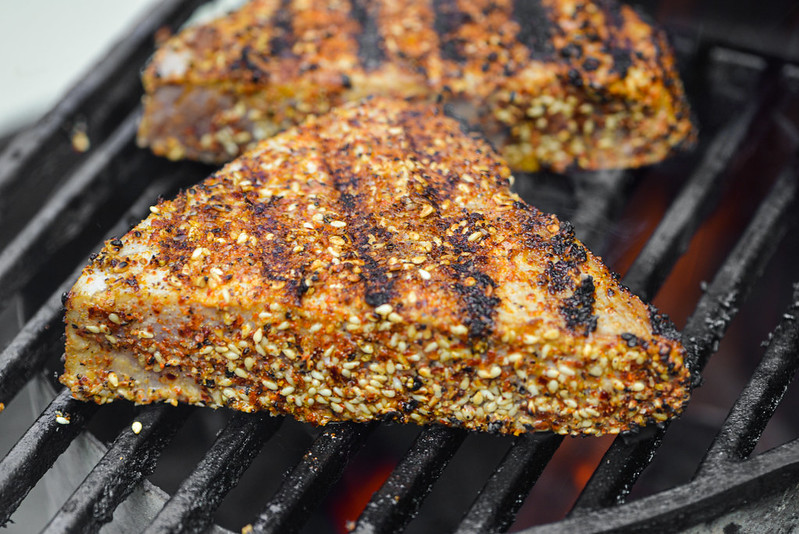Spicy Tuna Baos
Around this time last year, I posted up my favorite recipe I did in 2021 for spicy smoked pork belly buns. I so loved those buns that I made them a couple times again, which is unusual for me as I'm often looking to the next, new recipe instead of going back. I even considered making them yet again when planning a tiki-inspired cookout in the late summer, but instead I decided to keep with a similar flavor profile to deliver the taste I craved, but swapped the protein and altered the recipe enough to make these wholly unique spicy tuna baos.
Those pork belly buns relied heavily on the Korean spicy fermented pepper paste gochujang to deliver the heat via a marinade and glaze on the pork. However, in this recipe I changed up the gochujang delivery device to be in the sauce, mixing it with mayonnaise, source cream, lime juice, and sesame oil to create a powerful spread that would do the heavy lifting in giving the final buns their respectable heat and complimentary tang.
I still brought some heat to the tuna though by way of a rub that played off what was already started in the sauce by using gochugaru—Korean crushed red pepper—and sesame seeds as the foundation, with the essential salt and pepper also tossed in along with a lesser amount of garlic powder.
I applied the rub all over a couple of tuna steaks while I had a two-thirds full chimney of charcoal outside lighting. A few years back, I made a tray of grilled tuna wonton nachos where I had the idea to sear the tuna super fast directly over the scorching heat of a lit chimney of charcoal. That worked out so well in giving me a crusty sear with the desired raw interior, that repeating the process for this recipe was a no brainer.
It took only about a minute per side for the exterior of the tuna to develop grill marks and a good sear when cooked on the chimney. I was actually flipping the tuna more frequently than that though in order to try to not scorch the sesame seeds too much, although some darkened a bit more than I was hoping in spots. In the end that didn't end up being a hit against the final flavor of the buns.
After a short rest, I began slicing the tuna into boa-sized strips and I was once again greeted with the ideal crusty exterior paired with the raw interior that I was after. Happy with how the fish came out, I moved on the bun assembly.
To do that, I took the small sized buns that I had heated in a bamboo steamer and spread a layer of the gochujang mayonnaise across the entire inside. I then topped each bun with an avocado slice, piece of tuna, cilantro, scallions, fried shallots, and some strips of fresh fresno chili.
While I'm all in on the heat delivery device that those pork belly buns where, these tuna baos actually struck a more crowd-pleasing balance between spicy and cool. As I expected, the mayo was the primary heat source, and with a generous amount on each bun, it stood out the most. However, both the avocado slice and tuna helped temper the spiciness and that allowed the freshness of the herbs to come through as well as the sweet crunch of the fried shallots. The pepper strips did add a good boost of heat too, but it wasn't overly hot and kept this dish enjoyable for the entire crew that was gathered that day, save for the wee ones. The spicy pork belly buns will always closest to my heart, but I can see how these tuna buns may be more universally pleasing while keeping a lot of the foundational Korean-inspired flavor intact that makes them so incredible.










